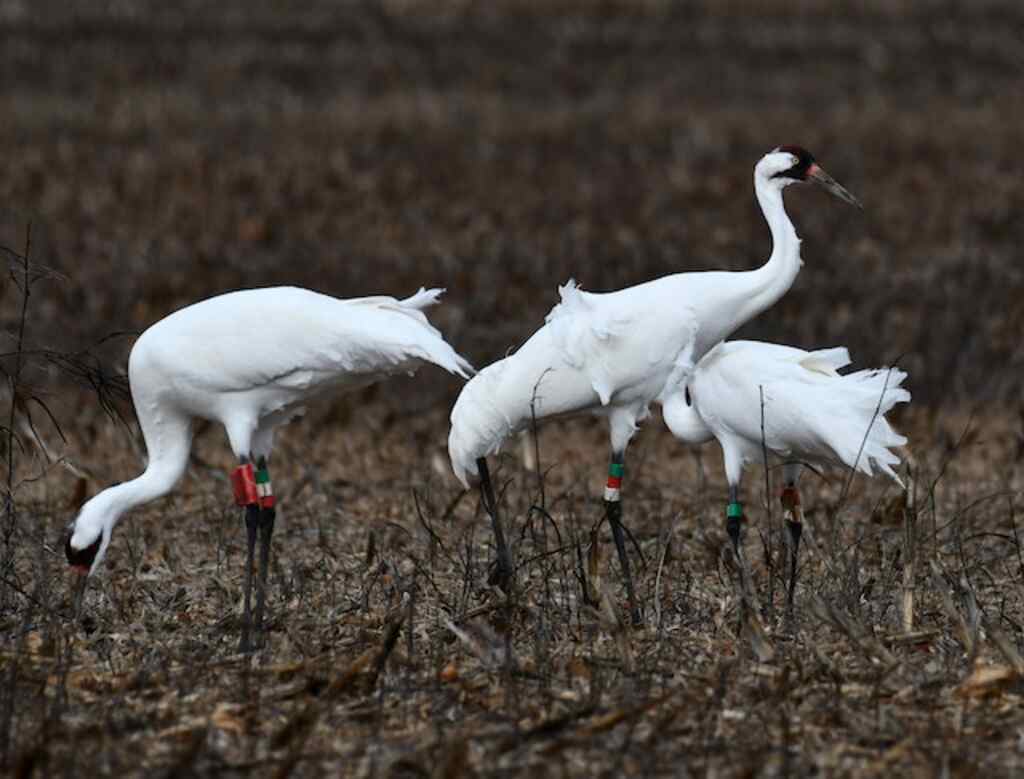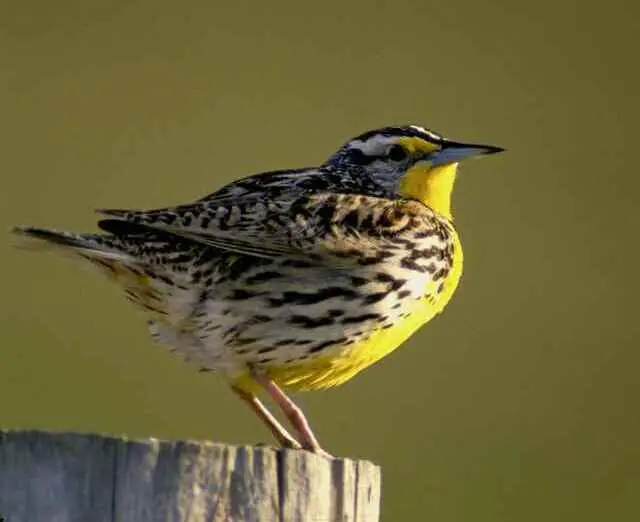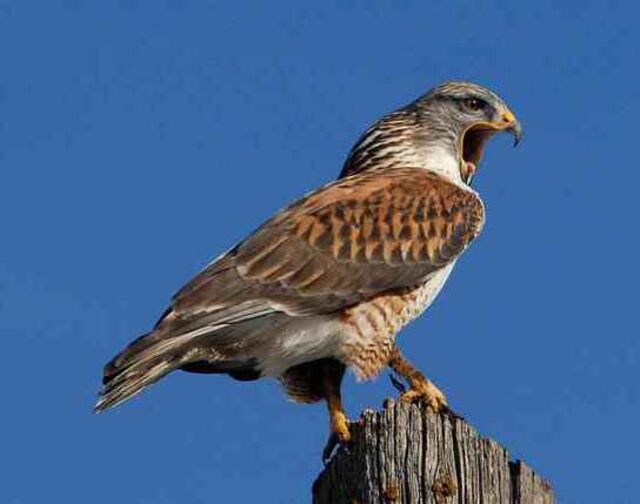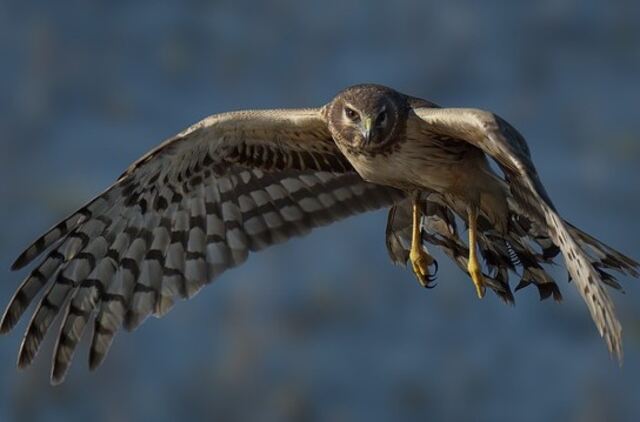North Dakota may not be the first place that comes to mind when it comes to birdwatching, but this Midwestern state has a lot to offer. From sprawling grasslands to beautiful lakes, North Dakota is home to a diverse array of bird species.
Whether you’re a seasoned birder or a beginner, there’s something for everyone in North Dakota’s top birdwatching hotspots.
Table of Contents
- 1 Key Takeaways:
- 2 Top Birdwatching Hotspots In North Dakota
- 3 Exploring the Rich Birdlife of North Dakota
- 4 Des Lacs National Wildlife Refuge
- 5 Chase Lake National Wildlife Refuge
- 6 Arrowwood National Wildlife Refuge
- 7 Audubon National Wildlife Refuge
- 8 Knife River Indian Villages National Historic Site
- 9 Lake Metigoshe State Park
- 10 Lostwood National Wildlife Refuge
- 11 Conclusion
- 12 FAQs: Top Birdwatching Hotspots In North Dakota
- 12.1 What are the top birdwatching hotspots in North Dakota?
- 12.2 What bird species can I expect to see at Des Lacs National Wildlife Refuge?
- 12.3 Why is Chase Lake National Wildlife Refuge significant for birdwatching?
- 12.4 What bird species can I find at Arrowwood National Wildlife Refuge?
- 12.5 What makes Audubon National Wildlife Refuge a great birdwatching destination?
- 12.6 What is the significance of Knife River Indian Villages National Historic Site for birdwatching?
- 12.7 What bird species can I expect to see at Lake Metigoshe State Park?
- 12.8 Why is Lostwood National Wildlife Refuge important for birdwatching?
- 12.9 Where can I find more information about birdwatching in North Dakota?
- 13 Author
Key Takeaways:
- North Dakota offers a variety of birdwatching opportunities.
- The state is home to a diverse array of bird species.
- Conservation efforts are important to protect these natural habitats.
Top Birdwatching Hotspots In North Dakota
North Dakota offers a variety of birdwatching hotspots, including the Arrowwood National Wildlife Refuge, the Des Lacs National Wildlife Refuge, and the Audubon National Wildlife Refuge.
Exploring the Rich Birdlife of North Dakota
North Dakota is a birdwatcher’s paradise, offering a diverse range of habitats that attract over 300 bird species throughout the year.
From grasslands and wetlands to forests and prairies, North Dakota’s unique ecosystems provide the perfect environment for birdlife to thrive.
The state is home to several birding trails, nature reserves, and national parks that offer visitors the chance to observe an abundance of bird species.
Some of the best birdwatching spots in North Dakota include:
| Birdwatching Location | Key Features | Notable Bird Species |
|---|---|---|
| Des Lacs National Wildlife Refuge | Wetlands, grasslands, and forests | Tundra swans, pelicans, sandhill cranes, and various duck species |
| Chase Lake National Wildlife Refuge | The largest nesting colony of white pelicans in North America | White pelicans, terns, egrets, and herons |
Other popular North Dakota birdwatching destinations include Arrowwood National Wildlife Refuge, Audubon National Wildlife Refuge, Knife River Indian Villages National Historic Site, Lake Metigoshe State Park, and Lostwood National Wildlife Refuge.
Whether you’re a seasoned birdwatcher or a nature enthusiast just starting out, North Dakota promises a memorable birdwatching experience. So grab your binoculars and explore the state’s beautiful landscapes while admiring the diverse range of avian species that call North Dakota home.
Des Lacs National Wildlife Refuge
Des Lacs National Wildlife Refuge is a true gem for birdwatchers in North Dakota. Located in the northwest part of the state, it encompasses nearly 20,000 acres of pristine wetlands and grasslands that provide habitat for over 240 species of birds.
This refuge is particularly attractive to waterfowl, with a significant number of ducks, geese, and swans spending their winters here. Some of the common waterfowl species at Des Lacs include mallards, northern pintails, and wood ducks. In the spring and summer, look out for songbirds such as western meadowlarks, yellow warblers, and American goldfinches.
| Best Time to Visit | Spring and fall are the best seasons for birdwatching, but visitors can observe birds throughout the year. |
|---|---|
| How to Get There | Des Lacs National Wildlife Refuge is located approximately 12 miles north of Kenmare, off of Highway 52. |
| Facilities | The refuge has a visitor center, hiking trails, and public restrooms. |
In addition to birdwatching, visitors to Des Lacs National Wildlife Refuge can enjoy other recreational activities such as hiking, fishing, and hunting. The refuge has several hiking trails, including the 1.5-mile Woodland Trail and the 2.5-mile Marsh Trail, which offer scenic views of the wetlands and grasslands.
Overall, Des Lacs National Wildlife Refuge is a must-visit destination for any birdwatcher in North Dakota. With its diverse birdlife and beautiful scenery, it offers a unique and unforgettable birdwatching experience.
Chase Lake National Wildlife Refuge
Located in central North Dakota, the Chase Lake National Wildlife Refuge is home to one of the largest nesting colonies of American white pelicans in North America. These majestic birds are a sight to behold as they gracefully soar through the air and float on the water’s surface.
In addition to the white pelicans, the refuge is also home to a variety of other bird species, such as grebes, terns, ducks, and geese. Visitors can take part in birdwatching tours that are offered throughout the year. These tours provide an opportunity to observe and learn about the diverse birdlife that calls the refuge home.
White Pelican Nesting Season
The best time to visit the Chase Lake National Wildlife Refuge is during the summer months, when the pelicans are nesting. This is a truly unique experience that should not be missed. From mid-May to mid-July, visitors can witness the spectacular sight of thousands of white pelicans gathered together, tending to their nests and raising their young.
This is a critical time for the pelicans, and the refuge works hard to protect their nesting habitat. Visitors are asked to respect the refuge’s rules and regulations during the nesting season to ensure the safety and wellbeing of the birds.
Conservation Efforts
The Chase Lake National Wildlife Refuge is also an important area for bird conservation. The refuge’s grasslands provide a crucial habitat for a variety of bird species, including grassland birds that are experiencing population declines across North America.
The refuge works closely with conservation organizations to protect and manage the grassland habitat, ensuring that it remains a safe and healthy environment for the birds that rely on it.
Visitors to the Chase Lake National Wildlife Refuge can witness firsthand the beauty and importance of this unique ecosystem and the birds that call it home.
Arrowwood National Wildlife Refuge
The Arrowwood National Wildlife Refuge is a spectacular birding destination in North Dakota. Located in the central part of the state, this refuge encompasses over 15,000 acres of wetlands, prairies, and forests, making it one of the most diverse bird habitats in the region.
One of the key features of the Arrowwood National Wildlife Refuge is the Arrowwood Lake, which provides a critical stopover for migratory waterfowl and a breeding ground for several species of water birds. The lake is surrounded by marshes, sloughs, and grasslands, creating a unique ecosystem that attracts a wide variety of bird species.
The Birdlife at Arrowwood National Wildlife Refuge
The Arrowwood National Wildlife Refuge is home to over 200 bird species, making it a birding paradise. Birdwatchers can spot waterfowl such as the mallard, wood duck, and canvasback, along with shorebirds such as the American avocet and the black-necked stilt. Raptors such as the bald eagle and the peregrine falcon can also be seen soaring in the skies above the refuge.
Other bird species that can be spotted at the Arrowwood National Wildlife Refuge include the great blue heron, the American bittern, and the western meadowlark. The refuge is also an excellent place to observe songbirds such as the Baltimore oriole and the ruby-throated hummingbird.
Birdwatching Opportunities
The Arrowwood National Wildlife Refuge has several trails and observation areas that offer excellent birdwatching opportunities. The Arrowwood Auto Tour Route takes visitors through the heart of the refuge, providing access to different habitats and bird species. The Lakeview Trail is a popular hiking trail that offers panoramic views of Arrowwood Lake and opportunities to spot waterfowl and shorebirds.
The Arrowwood National Wildlife Refuge is also a popular spot for photography enthusiasts. The scenic landscapes and diverse birdlife make for excellent photo opportunities. Birdwatchers and photographers are advised to bring binoculars, cameras, and appropriate clothing and footwear.
Audubon National Wildlife Refuge
The Audubon National Wildlife Refuge is a must-visit destination for birdwatching enthusiasts in North Dakota. This expansive refuge, covering over 14,000 acres, provides habitat for a variety of waterfowl and shorebirds, making it a haven for birdwatchers.
The refuge is situated along the historic Missouri River and features a diverse range of habitats, including wetlands, rivers, and prairies. These habitats attract a wide range of bird species, including sandhill cranes, sharp-tailed grouse, and great horned owls.
Wildlife Viewing
Visitors to the Audubon National Wildlife Refuge can take advantage of the many birdwatching opportunities available. There are several wildlife viewing areas throughout the refuge, each offering a unique perspective on the birdlife and natural beauty of the area.
One of the best places to start is the auto tour route, which provides a scenic drive through the refuge’s grasslands and wetlands. Along the way, visitors can spot various bird species, including great blue herons and American white pelicans.
Another popular spot is the Lost Lake Wildlife Drive, which takes visitors through a diverse range of habitats and offers excellent opportunities for spotting migratory birds, as well as resident species.
Visitor Information
The Audubon National Wildlife Refuge is open year-round and offers a range of visitor services, including camping, hiking, and wildlife viewing. There are several trails throughout the refuge, ranging from short walks to longer hikes, each offering a unique perspective on the natural beauty of the area.
Visitors are advised to bring appropriate gear and clothing, including binoculars and insect repellent, as well as plenty of water and snacks. Additionally, visitors are asked to respect the natural environment and follow all posted rules and regulations.
Overall, the Audubon National Wildlife Refuge is an excellent destination for birdwatching enthusiasts and nature lovers alike. With its diverse range of habitats and abundance of bird species, it offers a unique and unforgettable birdwatching experience in North Dakota.
Knife River Indian Villages National Historic Site
The Knife River Indian Villages National Historic Site preserves the historic and cultural heritage of the Northern Plains Indian people, particularly the Mandan, Hidatsa, and Arikara tribes. The site is situated in North Dakota’s central region and offers visitors a glimpse into the past.
Aside from its cultural significance, Knife River Indian Villages is also a top destination for birdwatchers. The site serves as a haven for bird species that can be observed throughout the year, particularly during the spring and fall migration seasons.
Visitors can spot a variety of bird species around the site’s grasslands and woodlands. Among the notable bird species found at Knife River Indian Villages include the spotted towhee, lazuli bunting, and western meadowlark. Birdwatchers may also catch a glimpse of larger species like hawks, eagles, and vultures soaring above, as well as shorebirds by the river.
There are several walking trails at Knife River Indian Villages that offer visitors the opportunity to explore the site’s natural beauty and birdlife. Birdwatchers are advised to bring binoculars and a birding guidebook to maximize their experience.
“The Knife River Indian Villages National Historic Site is a fascinating destination for history buffs and birdwatchers alike. You can enjoy history and birdwatching at the same time, which is a unique experience.”
Lake Metigoshe State Park
Lake Metigoshe State Park is a picturesque destination for birdwatching. The park offers a variety of habitats, including woodlands, wetlands, and grasslands, which attract a diverse range of bird species.
Some of the popular birds spotted at Lake Metigoshe State Park include the American goldfinch, dark-eyed junco, and the red-breasted nuthatch. Visitors can explore the park’s trails to catch a glimpse of these and other species.
| Best Time to Visit | Location | Notable Bird Species |
|---|---|---|
| Spring and Summer | Bottineau County, North Dakota | American Goldfinch, Dark-eyed Junco, Red-breasted Nuthatch |
In addition to birdwatching, Lake Metigoshe State Park also offers opportunities for hiking, boating, and fishing. Visitors can explore the park’s many trails, including the 2-mile Lake Loop Trail, which winds through the park’s woodlands and along the lakeshore.
With its stunning natural beauty and diverse birdlife, Lake Metigoshe State Park is a must-visit destination for birdwatchers in North Dakota.
Lostwood National Wildlife Refuge
The Lostwood National Wildlife Refuge in northwestern North Dakota is a prime destination for birdwatching enthusiasts. The refuge spans over 10,600 acres of mixed-grass prairie and is home to a diverse range of bird species, including grassland birds, waterfowl, and raptors.
One of the most popular bird species found in the refuge is the sharp-tailed grouse, which uses the prairie habitat for breeding and feeding. Visitors may also catch sight of the Baird’s Sparrow, Sprague’s Pipit, and the Upland Sandpiper, all of which are considered grassland birds. Additionally, the refuge is home to the Ferruginous Hawk, a large bird of prey that prefers open grasslands for hunting.
The Lostwood National Wildlife Refuge is an important habitat for grassland birds, many of which are experiencing population declines due to habitat loss. The mixed-grass prairie ecosystem provides essential breeding, nesting, and foraging grounds for these birds.
Visitors to the Lostwood National Wildlife Refuge can explore the refuge through its trails and observation areas. The refuge offers a variety of opportunities for birdwatching, including guided tours and educational programs. There are also designated areas for hunting and fishing.
Overall, the Lostwood National Wildlife Refuge is a beautiful and important destination for birdwatching in North Dakota. Its grasslands and diverse birdlife offer a unique experience for nature enthusiasts and provide vital habitats for the state’s bird species.
Conclusion
North Dakota is a hidden gem for birdwatching enthusiasts, with a rich diversity of bird species and stunning natural habitats. Whether you are a novice or an experienced birdwatcher, the top birdwatching hotspots in North Dakota offer an unforgettable experience.
Conservation Efforts
It is crucial to preserve these habitats and ecosystems for future generations of birds and birdwatchers. By supporting conservation efforts and responsible birdwatching practices, we can ensure that these sites continue to thrive.
Additional Resources
For more information on birdwatching trails in North Dakota, check out the North Dakota Birding Society website. You can also download a free North Dakota birdwatching guide from the North Dakota Game and Fish Department.
So what are you waiting for? Grab your binoculars and head to North Dakota to discover its top birdwatching hotspots.
FAQs: Top Birdwatching Hotspots In North Dakota
What are the top birdwatching hotspots in North Dakota?
The top birdwatching hotspots in North Dakota include Des Lacs National Wildlife Refuge, Chase Lake National Wildlife Refuge, Arrowwood National Wildlife Refuge, Audubon National Wildlife Refuge, Knife River Indian Villages National Historic Site, Lake Metigoshe State Park, and Lostwood National Wildlife Refuge.
What bird species can I expect to see at Des Lacs National Wildlife Refuge?
Des Lacs National Wildlife Refuge is home to a variety of bird species, including waterfowl, songbirds, raptors, and shorebirds. Visitors may spot species such as the western grebe, American white pelican, yellow-headed blackbird, and more.
Why is Chase Lake National Wildlife Refuge significant for birdwatching?
Chase Lake National Wildlife Refuge is known for its large nesting colony of white pelicans, which is the largest in North America. The refuge provides important breeding grounds for these birds and offers excellent opportunities for birdwatching.
What bird species can I find at Arrowwood National Wildlife Refuge?
Arrowwood National Wildlife Refuge is home to a variety of bird species, including waterfowl, shorebirds, songbirds, and raptors. Visitors may see species such as the American avocet, northern pintail, red-winged blackbird, and more.
What makes Audubon National Wildlife Refuge a great birdwatching destination?
Audubon National Wildlife Refuge is a haven for waterfowl and shorebirds. The refuge offers stunning scenery, diverse habitats, and opportunities to observe a variety of bird species, including the great blue heron, American coot, and Wilson’s phalarope.
What is the significance of Knife River Indian Villages National Historic Site for birdwatching?
Knife River Indian Villages National Historic Site is not only culturally significant but also offers opportunities for birdwatching. Visitors may spot bird species such as the cedar waxwing, yellow warbler, blue-winged teal, and more.
What bird species can I expect to see at Lake Metigoshe State Park?
Lake Metigoshe State Park is home to a diverse range of bird species, including waterfowl, songbirds, raptors, and woodpeckers. Visitors may encounter species such as the great horned owl, American goldfinch, bald eagle, and more.
Why is Lostwood National Wildlife Refuge important for birdwatching?
Lostwood National Wildlife Refuge is known for its grasslands and the abundance of bird species it attracts. The refuge provides vital habitat for grassland birds, including the sharp-tailed grouse, Sprague’s pipit, and McCown’s longspur.
Where can I find more information about birdwatching in North Dakota?
For more information about birdwatching in North Dakota, you can visit the official websites of the national wildlife refuges, state parks, and historic sites mentioned in this article. Additionally, various birdwatching guides and resources are available online for North Dakota birdwatching enthusiasts.







